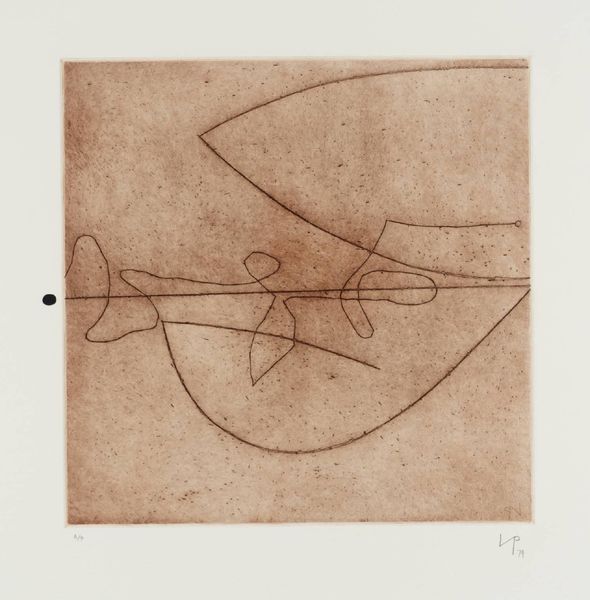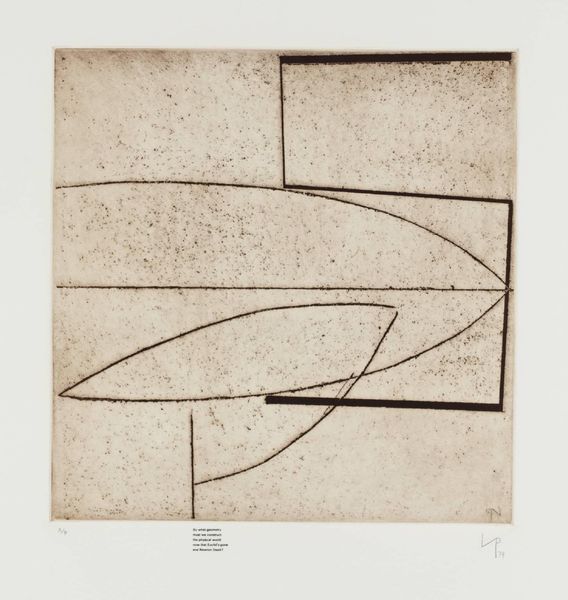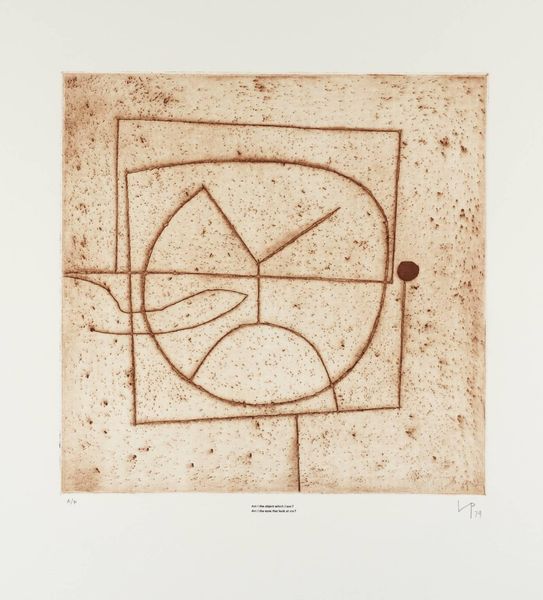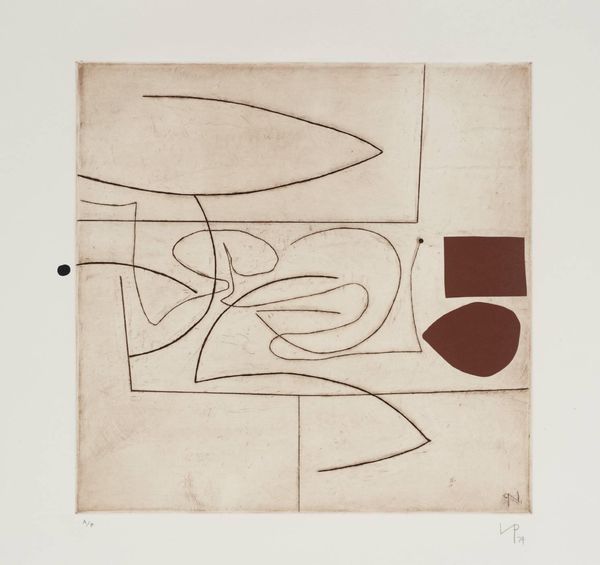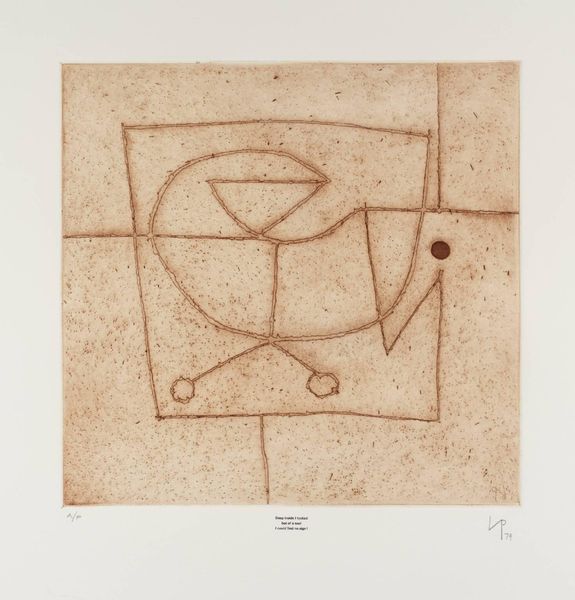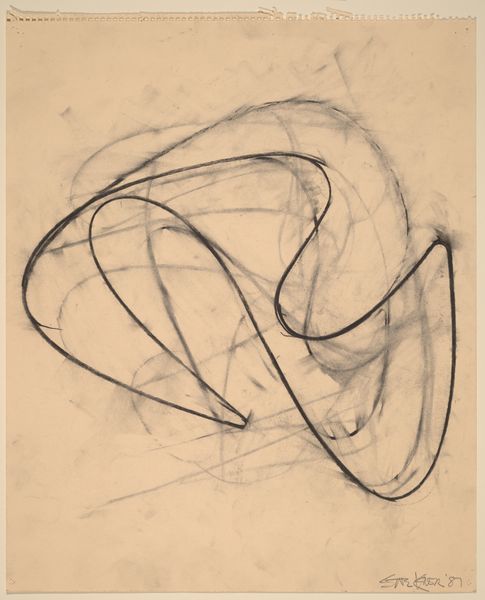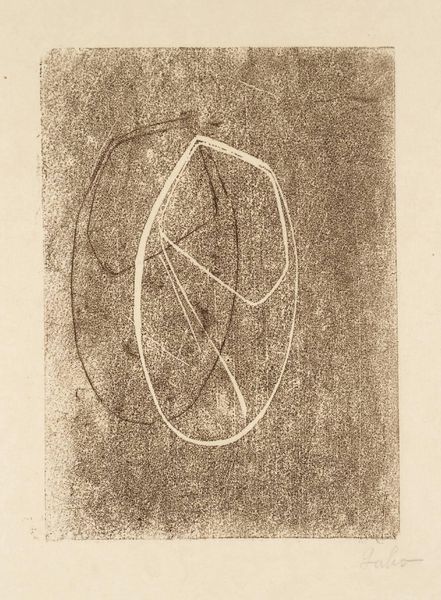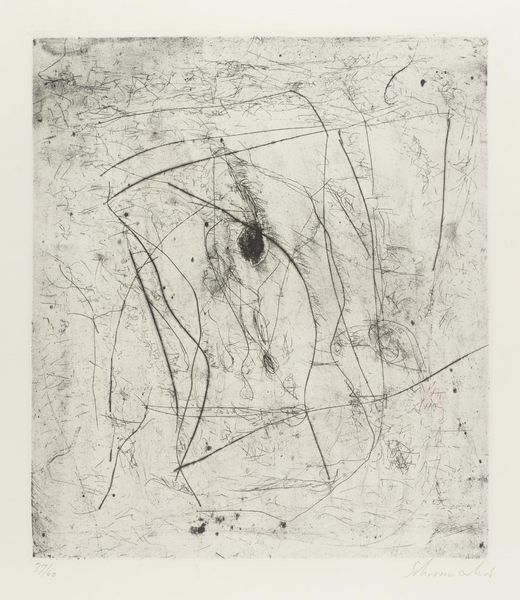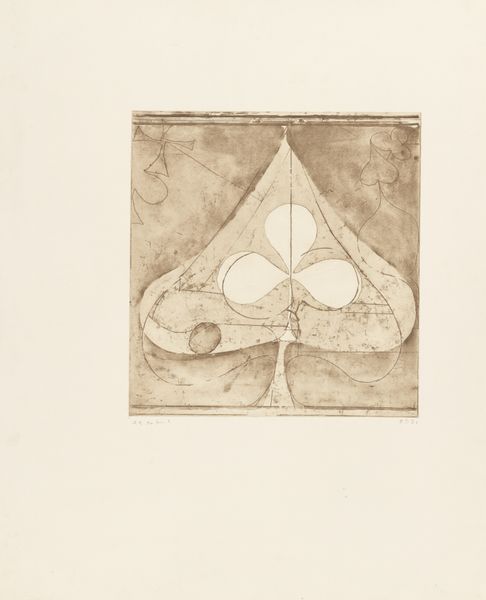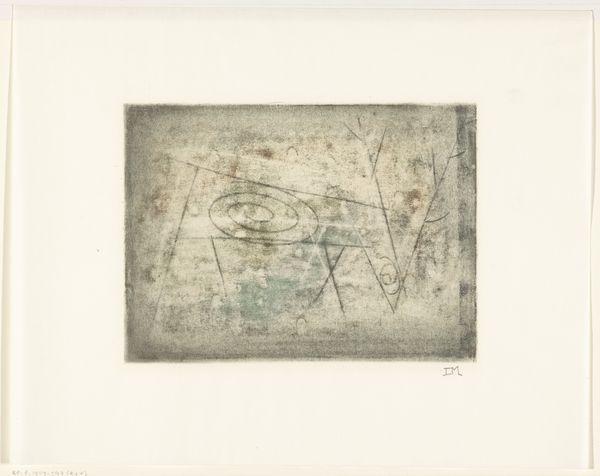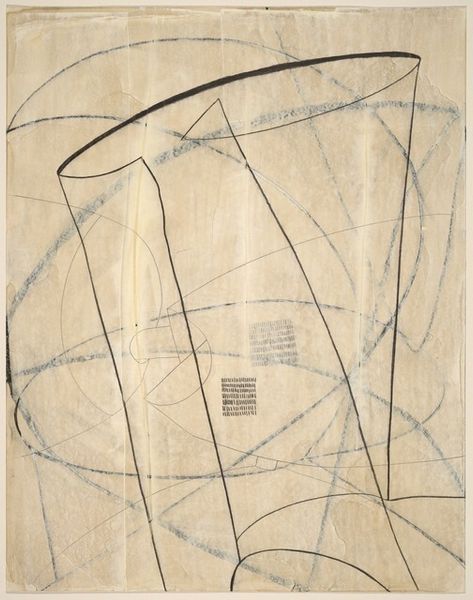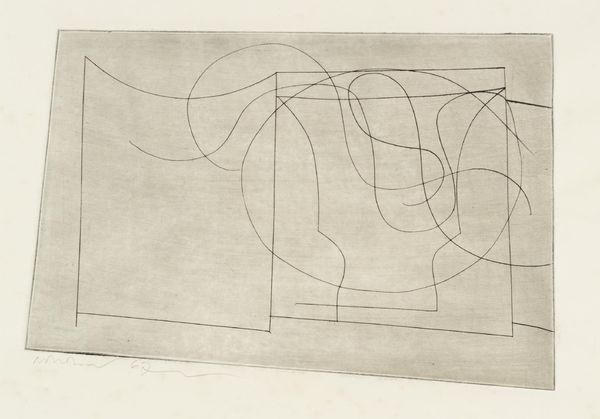
Dimensions: image: 391 x 397 mm
Copyright: © Tate | CC-BY-NC-ND 4.0 DEED, Photo: Tate
Curator: Victor Pasmore created this intriguing print, "When the Lute is Broken." I see it's part of the Tate collection. Editor: There's a starkness to it. The etched lines feel like remnants, fragments of something once whole, set against this speckled, almost weathered ground. Curator: The lute, of course, is symbolic—a classical instrument representing harmony, culture, perhaps even a lost order when broken. The lines themselves evoke musical strings, disrupted and fractured. Editor: And the textures—that ground isn't just background; it feels intrinsic. I'm wondering about the etching process, the biting of the acid on the plate to create that granular effect. Did he want that sense of decay? Curator: Perhaps a deliberate attempt to break with tradition? Pasmore moved towards abstraction later in his career. This feels transitional, a rejection of established artistic language. Editor: Seeing the rough texture does make me think about the physical act of creation. The labour embedded within. Curator: A fascinating piece. I'm left pondering the many layers of meaning behind what initially appears so simple. Editor: I'm intrigued by the tension between the implied delicacy of the music and the robust, almost brutal process used to create the image.
